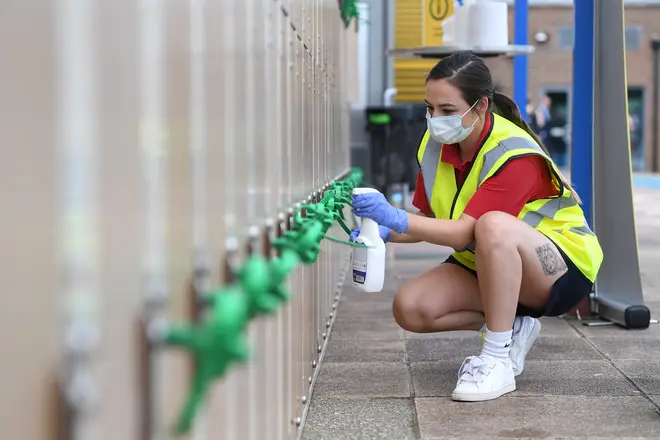On Air Now
Heart Breakfast with JK and Amanda Holden 6:30am - 10am
13 July 2020, 13:05 | Updated: 13 July 2020, 13:08

If you fancy going for a quick dip at any point, you'll need to abide by all of the new rules put in place post-lockdown.
Now that outdoor pools are able to reopen in England (from July 11), many across the county can't wait to get their swimmers on.
Indoor pools are allowed to reopen again from July 25, which will be great news for many of the 5,000 pools across England.
However, many fear that a chunk will have to close as a result of the COVID-19 pandemic.
READ MORE: Gyms and swimming pools allowed to reopen in July, Government confirms

Obviously, things won't be back to normal for a while, and there are a number of strict rules that the pools and those who attend them will have to follow.
Here are the rules you'll have to follow when you next go for a swim:
While swimming, people will need to ensure that they socially distance so they won't be able to overtake each other.
Swim England has stated that if you're switching between strokes and your speed changes, you should swap lanes to one with slower swimmers.
Swimming pools will be putting up signs to show which way around the lanes customers should be moving, creating a one-way system, which is the standard for many other businesses at the moment.
This will aid in maintaining social distancing while exercising.
Pools will now be separated into wider lanes than the original ones to make sure people are the right distance away from each other.
This may mean that there are fewer people allowed in the pool at the same time compared to before lockdown.

Booking time slots is something that's now being applied to the majority of operating businesses, with reservations at pubs, salons, restaurants, theme parks and more becoming mandatory.
This will now also be applied to swimming pools.
Once you have been issued with a swim-time, you will have to stick to it, or risk your exercise regime being cut short.
If you want to use a float or any other swimming equipement such as swimming bands you will have to bring your own and be able to identify it as yours (mark it).
Children and adults taking lessons will be able to share equipment but it will have to be sanitised between uses.
Changing rooms are one of the areas of a leisure centre that poses the biggest risk of spreading the virus.
To reduce the amount of time customers spend in the changing rooms, they should arrive ready to go with swimmers on underneath their clothes.

Showers are allowed to stay open but customers are advised to only use them when absolutely necessary.
If possible, they should shower before and after their swim at home.
Swimming lessons are allowed to restart too but the lesson's instructor will have to stay on the poolside and won't be allowed in the pool like they normally would be.
They should also make sure to social distance from their pupils when they're by the side of the pool.
Using hand sanitiser is highly recommended with it being advised for everyone attending to carry and also regularly use.